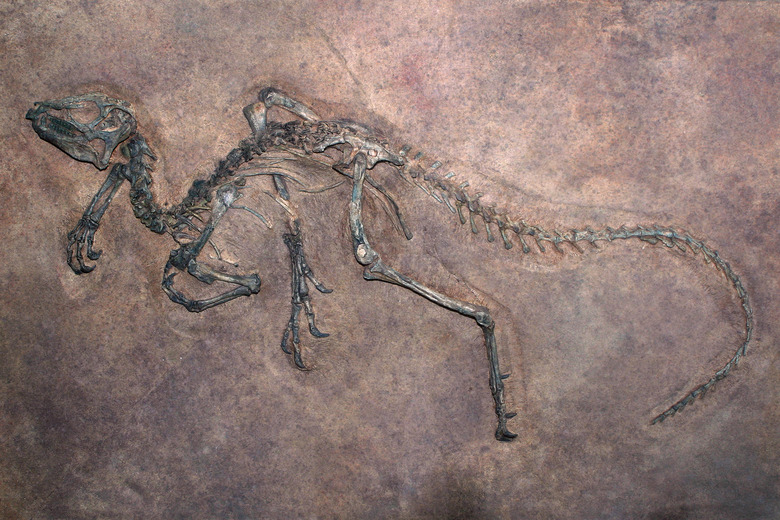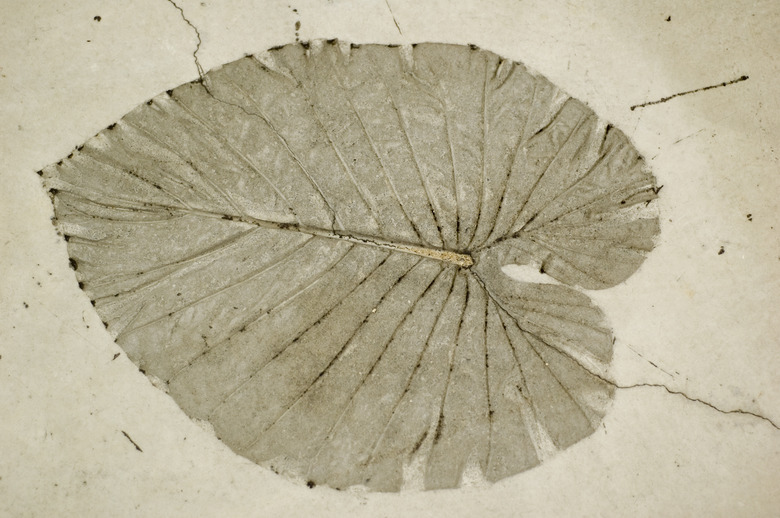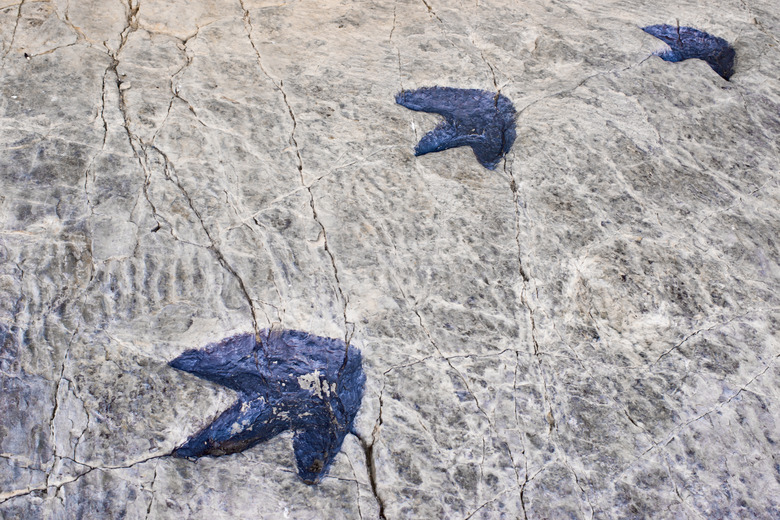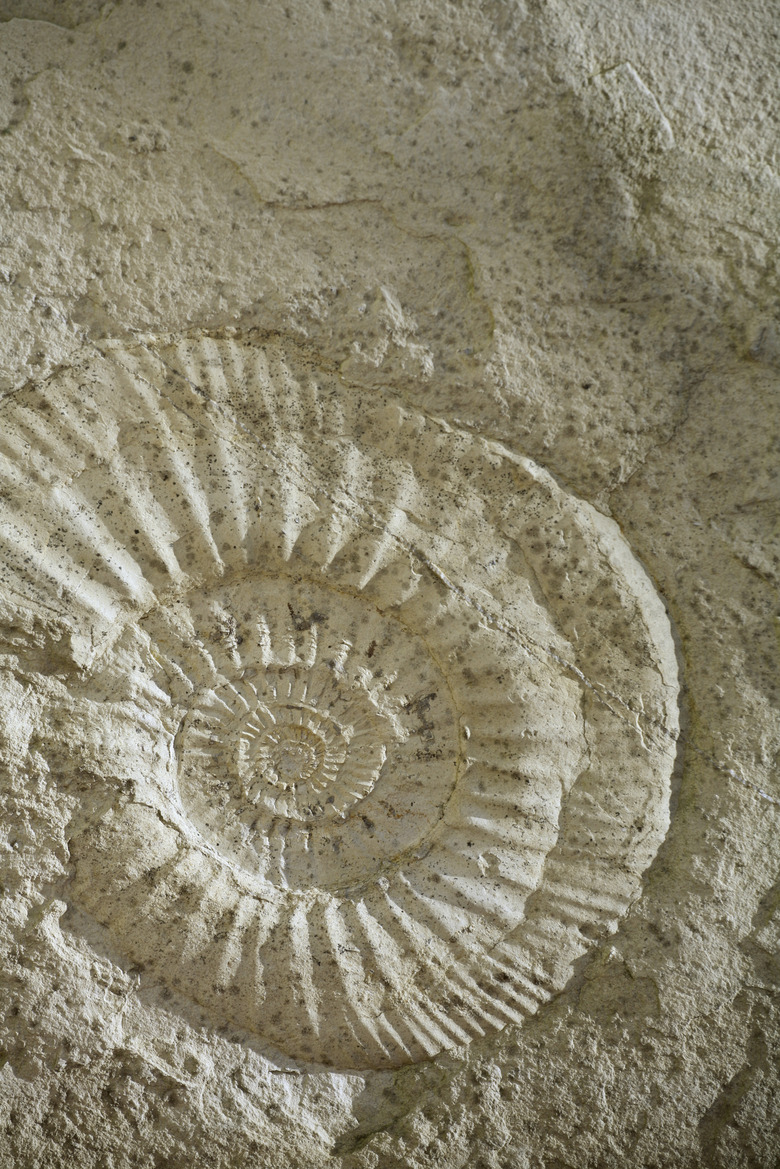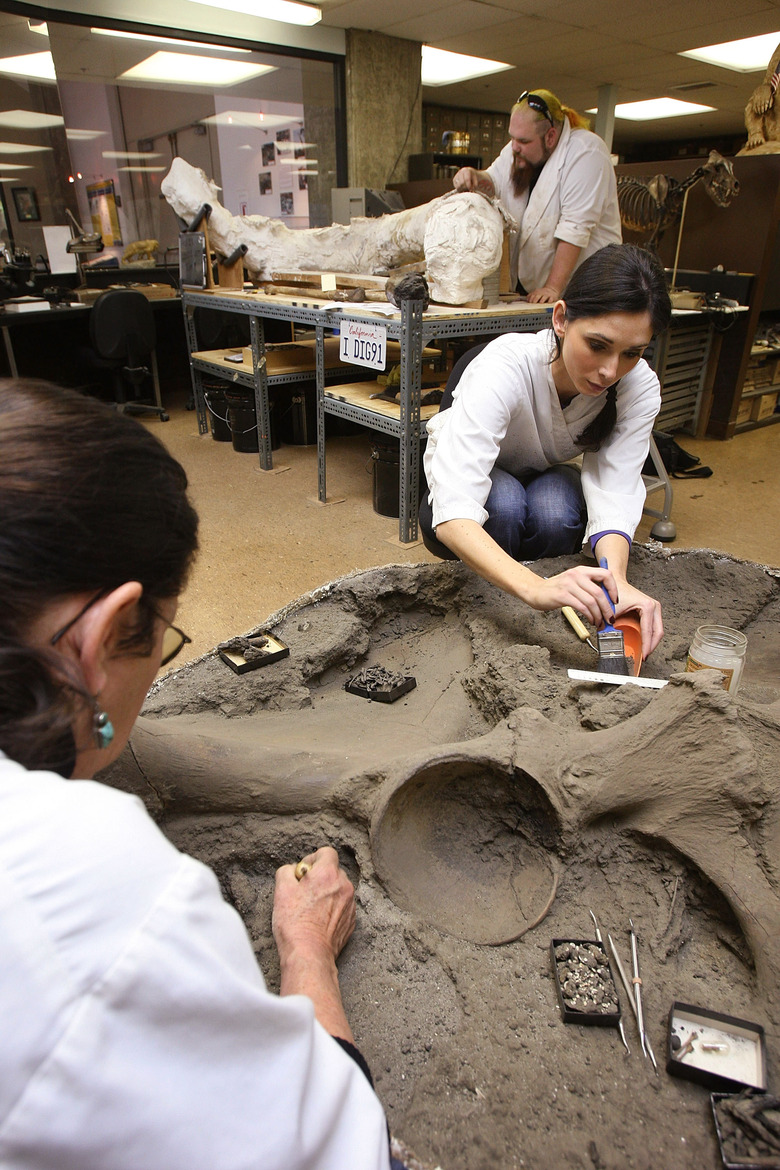The Three Main Types Of Fossils
Fossils have been used throughout history to document and date the different species of animals that have existed on Earth. From dinosaurs to neanderthals, fossils are integral to the accurate dating of life's time line on the planet. According to "Enchanted Learning," archaeologists use three main types of fossil: the true form fossil, trace fossil and mold fossil; a fourth type is the cast fossil. Fossilization can take millions of years to occur.
True Form Fossils
True Form Fossils
These fossils are made of an actual plant or animal. The hard parts of the body like the bones or stems were trapped in rock and effectively preserved. The soft parts of the body like the skin and muscle usually decompose before fossilization can occur.
Trace Fossils
Trace Fossils
According to "Enchanted Learning," these fossils can record the behaviors and movements of animals. Footprints, nests and fecal matter are all examples that reveal information about the animal's lifestyle.
Mold Fossils
Mold Fossils
According to "Exploring Earth," mold fossils are hollow impressions left by a plant or animal. The surrounding mud and sediment hardens around the dead organism and only an imprint of it remains after decomposition.
Cast Fossils
Cast Fossils
A cast fossil is a byproduct of a mold fossil. According to "Exploring Earth," when sediment fills in a hollow mold fossil, a cast fossil forms. The cast is a natural occurring replica of the actual organism.
Cite This Article
MLA
Burney, Jacob. "The Three Main Types Of Fossils" sciencing.com, https://www.sciencing.com/three-main-types-fossils-7449179/. 24 April 2017.
APA
Burney, Jacob. (2017, April 24). The Three Main Types Of Fossils. sciencing.com. Retrieved from https://www.sciencing.com/three-main-types-fossils-7449179/
Chicago
Burney, Jacob. The Three Main Types Of Fossils last modified March 24, 2022. https://www.sciencing.com/three-main-types-fossils-7449179/
